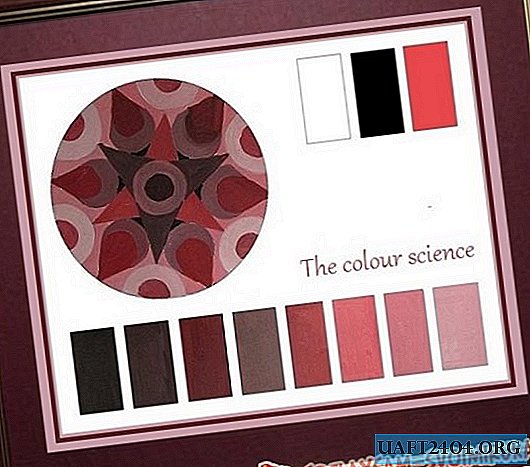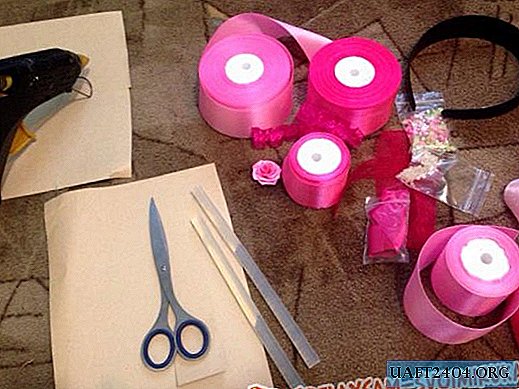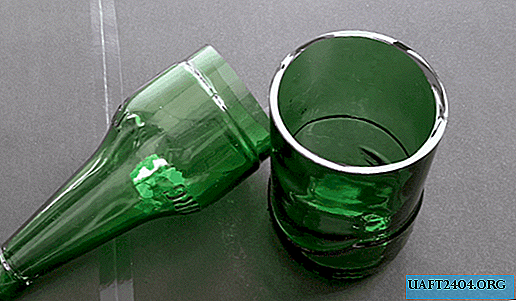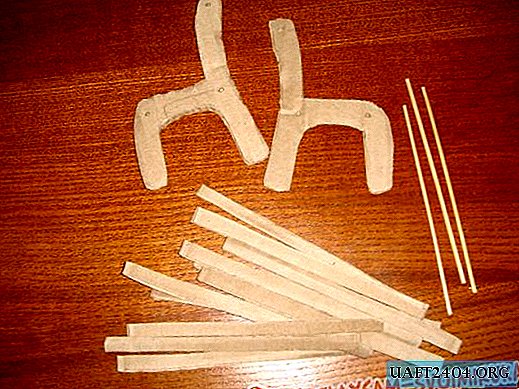Share
Pin
Tweet
Send
Share
Send


Today we will perform a very simple and incredibly useful exercise in flower science. All professional artists have gone through this more than once, and, I think, no one regretted it. In an art school, such an exercise is performed in the first year of study in the first quarter of the school year, in art studios hours of classes devoted to this topic are one of the most beloved. Because at the end of the lesson, beautiful work is always obtained for everyone, regardless of the age of the students.
The purpose of the lesson: first-hand to make sure that having at hand only three jars of paint, you can get dozens of new shades. Even without being a professional artist, you can create beautiful, harmonious things not only as drawings. Any work that uses color, whether it is embroidery, knitting, beadwork, scrapbooking, making jewelry from polymer plastic or something else, only wins if the master is interested in color science.
First, remember the three primary colors. It is believed that there are three primary colors: red, yellow and blue. And all other colors are obtained by mixing the three primary colors, resulting in a color spectrum. All colors in the spectrum are called chromatic. This word comes from the Greek chromos, which means color in translation. There are also achromatic (colorless) colors; these are black, white and gray.

Today we will be using black and white to change one of the three primary colors - red. The resulting new shades come in handy for creating a beautiful picture.
For the exercise you will need artistic gouache of red, black and white colors, a plastic palette, a sheet of thick paper of A3 or A4 format, a simple pencil, a ruler. First, draw a table. The width is about 5 divisions, the height is also 5 - depending on how many shades you want to get.

Paint the lower right rectangle with black gouache, the lower left rectangle with red gouache.

Now we are making a gradual transition from red to black. Put red gouache on the palette, mix a little black gouache into it, get a new shade, add it to the table, then even more black, add again and add black, then add to the table. The bottom row is ready. This is red, black and between them are three new shades of red.

Next stage. For each color from the bottom row, you need to gradually add white gouache to get a second row of shades. Then we add more white, we get the next, even brighter row. We continue this way to the very top of the table. The meaning of this exercise is that by stretching the red color towards black and white, we get new variations of red. The achromatic colors of white and black make muted red, but at the same time complicate it: white makes red more delicate, pastel, and black makes it heavier. Here's what the finished exercise done by a 1st grade student of an art school looks like.

As soon as you feel your power, and you can’t call this feeling different: is it a joke to have only three cans of paint in your arsenal and create such a palette of new colors! Now you can proceed to the next, more creative stage.
Now we will make a sketch of painting a decorative plate. We will use the same combination of colors. An example for us again is the work of a student in an art school. Draw a circle on a sheet with a compass. You can circle something round. We draw an ornament in a circle. Next we draw plates for the color scale.

The upper left plate, consisting of three divisions, is needed for red, black and white colors. The plate on the right will be filled with their derived shades.

We color our ornament, using only those colors that have been outlined in the work.

If you do the exercises slowly, carefully, they can become an independent wall decoration with the appropriate design, of course. Thanks to this, you will be able to create a creative studio atmosphere at home.

Applying the skills acquired today, you can perform more complex work, for example, a still life with oil paints. Here, too, only three colors that were already well known to you were used for work - white, red and black.

Share
Pin
Tweet
Send
Share
Send











